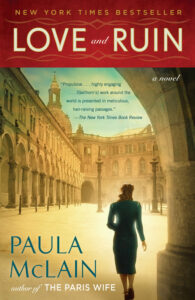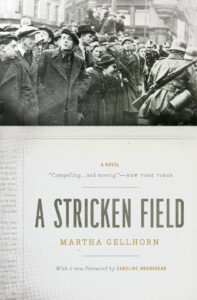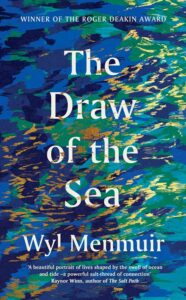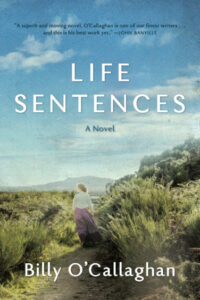
Meet the Mother of French Modern Art (Paris, late 1800s to 1941): How could such a highly influential modern art dealer from the early 20th century, of mostly undiscovered French avant-garde artists called les Jeunes, be unknown to us? As in Berthe Weill was the first to enthusiastically discover, promote, fight for, and exhibit Picasso and Matisse, leaving her mark on art history.
As in advancing an extraordinary list of other French artists like Marc Chagall, Toulouse Lautrec, Georges Braque, Raoul Dufy, and artists from other countries such as Diego Riviera (Mexico) and Amedeo Modigliani (Italy).
As in a Who’s Who of something like 500 “novel” artists we’re told, listed in a stunning, twenty+ page Glossary of Names of emerging artists representing and furthering revolutionary art movements that bucked conventionalism: Fauvism, Cubism, Surrealism, Pointillism, Impressionism, Expressionism, Realism, Synchronism, and Futurism. (For characteristics of these new modernist styles, see: https://www.moma.org/learn/moma_learning/glossary/, https://www.theartstory.org/movement/synchromism/, and https://www.tate.org.uk/art/art-terms/f/futurism.) Fauvists, Cubists, and Surrealists are the most frequent, described in this informative video:
Could it be that Berthe Weill, fittingly called by the artists Mother Weill, was a woman in the male-dominated art world? She opened her first gallery in the “starving artists” Montmartre neighborhood of Paris in 1902 – the first one to do that in the Belle Époque era. Could it also be that Weill was Jewish, notably when half of France was conflicted about the innocence or guilt of Jewish French army officer Alfred Dreyfus? The Dreyfus Affair exposed the ugly consequences of anti-Semitism resounding today. French President Emmanuel Macron showed how damaging this period was in France’s history by opening the Maison Zola-Musée Dreyfus in October 2021, in Medan, a village near Paris.
Certainly there’s been plenty of time for us to have heard about this trailblazer – gutsy, persevering, colorful, witty, sarcastic, and fascinating – since she wrote her memoir Pow! Right in the Eye! in 1933!
Note the two exclamation points in the title. A tip-off that her writings in these journal-type notebooks are unusually excessively punctuated. A no, no in the creative writing teaching world (use sparingly, if at all). Then again, Weill marched to her own rare beat. Weill, nobody’s fool, asked Paul Redoux, a French artist and journalist to write the preface, in which he explains that what makes her prose so special is that it’s not weighed down by “literary verbiage.” Instead, it’s an “extraordinary” original source document from both an “artistic and psychological” perspective:
“Artistic, in what it told about so many artists’ beginnings and their initial struggles, everything that crowded the French painting scene over twenty-five years.”
“Psychological, in what those sentences – and it would be sacrilege to change a word of them – said about a courageous, tenacious, visionary, and enthusiastic soul” . . . wonderfully expressed in disjointed, punchy sentences that weren’t so much as written as spoken, they were so natural and alive.”
Punchy is spot on! This is a punchy memoir in every way.
Which makes it not an easy one to translate, refreshingly says translator William Rodarmor, winner of the 2021 Albertine Prize awarded by the French embassy for French literature translations, who:
“Found tackling Weill’s memoir to be a mix of pleasure and terror. The pleasure was in learning intimate details about an array of twentieth-century artists from a lively, sharp-eyed observer. The terror was in wrestling with Weill’s rapid-fire prose, idiosyncratic style, and cryptic references while being haunted by the fear of getting something wrong.”
If it weren’t for the collaboration between Manhattan gallerists Julie Saul, who led this effort along with Lynn Gumpert, director of NYU’s Grey Gallery, we probably would still not know what Berthe Weill meant to the modern art world. The complete vision for this project to be realized in 2024 when the Gallery is set to open the exhibition, Berthe Weill: Indomitable Art Dealer of the Parisian Avant-Garde. Saul sadly passed away in February 2022, even before this book was released. Poignant news that punches us too as you appreciate the task of pulling the book together.
Saul and Gumpert made the smart decision to relocate Reboux’s “Preface: First a Few Words” after we’ve read the slim diary-like memoir. In doing so, he confirms what we’ve been feeling all along: that this “itty-bitty woman” (under five foot) with oversized eyeglasses had the “strength and faith” of a “husky giant.” A remarkable force of determination, risk-taking, and fervent devotion to the cause of nurturing what Weill astutely eyed as great art. Her quest was never about becoming rich. Which you might assume she became, but she didn’t. Continually, she mocks herself for her bad business sense, and chronically struggles financially to keep her gallery running, having to move five times due to expenses, problems with landlords, and so on.

via wikiart.org [Public Domain]
Outspoken about the “comings-and-goings” of a dizzying collection of diverse artists – painters, illustrators, watercolorists, sculptors, printmakers, decorators, collagists, engravers – plus collectors, other art dealers, art critics, writers, poets, and playwrights she crossed paths with, but she doesn’t say much about her family or personal life.
What stands out is that her father was a “ragpicker,” and how much she treasured her frequent travels with friends, many artists themselves. She never married. One artist friend Weill was quite close with was Émilie Charmy. Interestingly, she too is being newly rediscovered. Charmy seems best known for her self-portraits. She’s associated with the Fauvists, especially its leading figure Henri Matisse. Known as “King of the Wild Beasts,” the name attached to this new dazzling color style of painting.
Weill intended to end her memoir at her twenty-fifth anniversary as a gallerist, but decided to add an “Appendix” that takes us to her thirtieth year in business. She closed her gallery in 1941, marking forty years. She died in 1951.
Translator Rodarmor wrote most of the detailed “Notes” that come afterwards. Chapter-by-chapter over twenty single-spaced pages, he takes great pains to fill in the blanks of this “heroic slayer of the dragon of banality.” Which is why you might not want to skip them as you’ll find you’ll want more enlightenment about someone who was “always interested in everything new.” Someone who gravitated to youth and “everything that makes life bearable.”
This is a charming, lovingly produced book that makes it clear that despite the “aesthetic revolution of eye-catching splendor” that defied the ordinary, the fickleness of art, “too subject to the whims of speculation,” took years to make a dent in. Even with the enormous up-hill challenges Weill went through to showcase women artists, it’s impossible not be floored by how many were still “stricken from the history of art.”
Weill writes about how “beauty and good sense triumphed together.” But you have to wonder if or when that would have happened if it weren’t for one striving woman who never stopped believing.
Lorraine


















